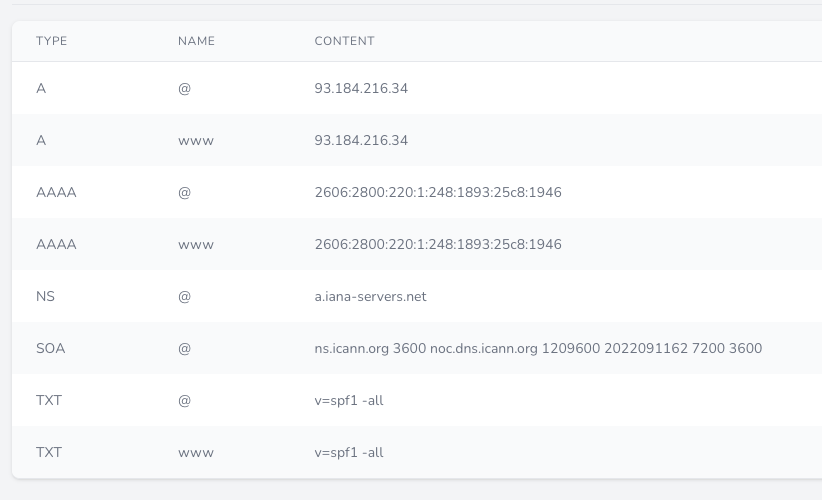
Explaining the most common DNS record types
Tom Schlick • December 9, 2022
zonewatcher dnsDNS, or Domain Name System, is an essential part of the internet that helps convert human-readable domain names (like www.example.com) into the numerical IP addresses that computers use to communicate with each other. To accomplish this, DNS uses a variety of different record types that serve different purposes. Here are some of the most important DNS record types and the differences between them:
A Records
A Records, also known as address records, are the most basic DNS record type. They map a domain name to a specific IP address, allowing computers to locate and connect to the correct server when a domain name is entered into a web browser. A Records are essential for connecting to any website or web-based service.
AAAA Records
AAAA Records, also known as Quad-A records, serve the same basic function as A Records, mapping a domain name to an IP address, but they are used to map the domain name to an IPv6 address instead of an IPv4 address. This is important as more devices and services begin to support IPv6.
CNAME Records
CNAME Records, or Canonical Name records, are used to create an alias for a domain name. This allows multiple domain names to point to the same IP address, which can be useful for organizing your DNS records or for creating shorter, easier-to-remember versions of a domain name.
MX Records
MX Records, or Mail Exchange records, are used to route email to the correct server. These records specify the domain name of the server that should be used to handle email for a particular domain, as well as a priority value that determines the order in which servers should be tried if multiple servers are available.
NS Records
NS Records, or Name Server records, are used to specify the DNS servers that are responsible for a particular domain. These records are essential for the proper functioning of the DNS system, as they allow computers to locate the correct DNS server when looking up a domain name.
TXT Records
TXT Records, or Text records, are used to store arbitrary text strings in DNS. These records can be used for a variety of purposes, such as storing information about a domain name, verifying the ownership of a domain, or implementing security measures like SPF and DKIM.
SOA Records
SOA Records, or Start of Authority records, are a type of DNS record that provides information about the DNS zone for a particular domain. These records are used by DNS servers to identify the authoritative DNS server for a domain and to determine the default parameters for the DNS zone, such as the time-to-live (TTL) value for DNS records and the interval at which secondary DNS servers should check for updates to the DNS zone.
While these are the most common record types, there are many more that are important to everyday communication on the internet. Any one of these records getting removed or changed erroneously can have negative impacts for your business. An A record getting removed might mean users can't get to your website. A MX record with the wrong values would prevent you from getting emails from customers.
Thankfully, ZoneWatcher monitors all of them and can alert you when your DNS records change! When they do, you can review the change see the previous record values in case you need to roll back the changes! We offer a variety of so you can be alerted no matter if you're a startup with 1 domain, or an agency needing to track 500 client domains!
